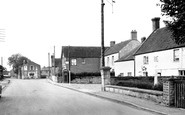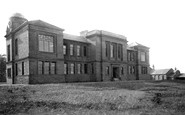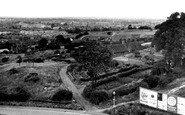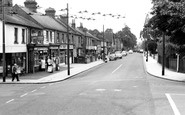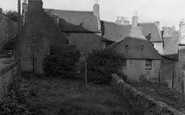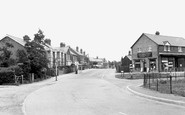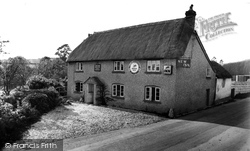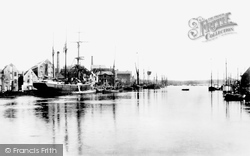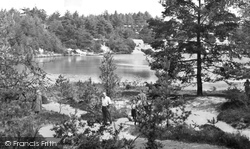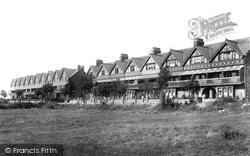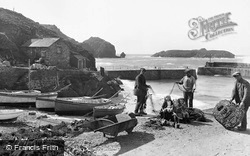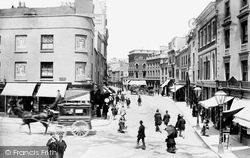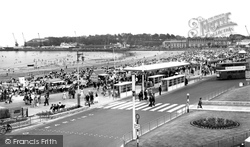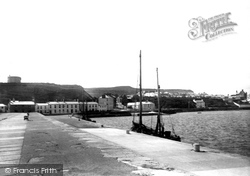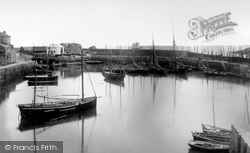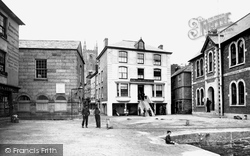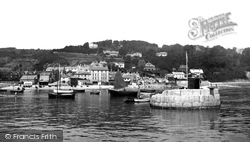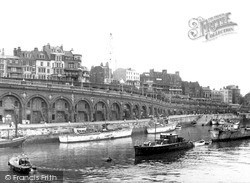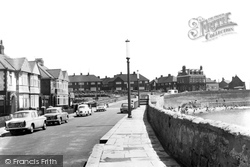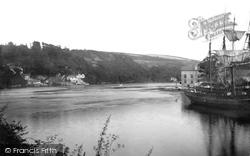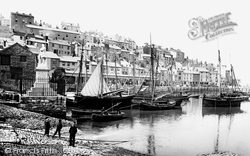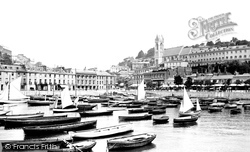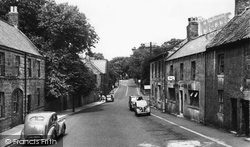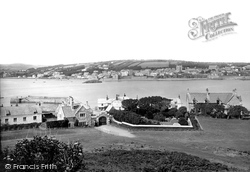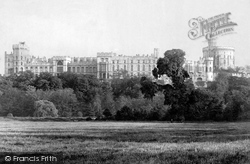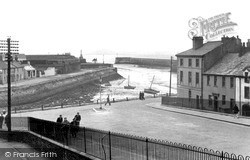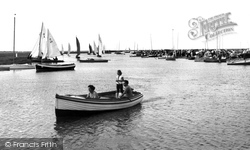Places
1 places found.
Did you mean: arthur ?
Those places high-lighted have photos. All locations may have maps, books and memories.
Photos
4 photos found. Showing results 101 to 4.
Maps
71 maps found.
Books
1 books found. Showing results 121 to 1.
Memories
96 memories found. Showing results 51 to 60.
Grape Vine Inn/Ring Of Bells Albert Holley
Transcribed from the Central Somerset Gazette of 1891: 16 May 1891 - Meare - "The Friendly and Benefit Society established last 9th Sep, held its first general church parade…After the service, the men ...Read more
A memory of Meare in 1890 by
2 Armour Street
I cannot trace my grand father's birth. The second child registered as born at 2 Armour Street, Riccarton, Kilmarnock (now demolished). Can anyone supply me with an old photo of the area?
A memory of Irvine in 1890 by
Life As A Young Boy In Saltdean
THE LIFE & TIMES OF DONALD CHARLES WILLIAMS Personal recollections from Don Williams from Hailsham who lived in Saltdean from 1937 to 1952 - Many thanks for these wonderful stories & photo's of Saltdean in the ...Read more
A memory of Saltdean in 1940 by
Grand Dad Jabez Johnson
Family legend has it that Grandad took a small party of friends for a pint or two in Oakengates. At the end of the evening for a lark he undid the traces and when they set off the horses went and the cart tipped up, to ...Read more
A memory of Oakengates in 1940 by
Bomber In Harbour Circa1940
My great grandfather crash landed a bomber in Mevagissey harbour in circa 1940 when his pilot was killed in action and co pilot was critically wounded. He was awarded the Distinguished Fling Medal which was listed in ...Read more
A memory of Mevagissey in 1940 by
My Memories Of Tilehurst
I was born in Theale but my parents moved to Tilehurst when I was 3 years of age where we lived at 16a Norcot Road with my grandparents Edith and Harold Goddard and other siblings to my mother Audrey Parsons, my father was ...Read more
A memory of Tilehurst in 1940 by
Old House On Harbour Road
The house on Harbour Road was where I lived with my parents and sister for approx two years. We lived in one room in the gable end, then we were moved to the other end which was three rooms in a row. We lived there till ...Read more
A memory of Kinghorn in 1941 by
46 Bridge Road, Cove
46 Bridge Road at Cove is very significant to me because I was born in Bridge Road, no 46, on 29th June 1943, in the photo of Bridge Road it is the second house on the left, opposite Cove Supply Stores, so I'm sure my mother would ...Read more
A memory of Cove in 1943 by
Seven Years Of My Childhood
I was at St Michael's from 1943 to 1950. The school had just moved from Uxbridge because of the war. Old gilded pictures, suits of armour stored. We weren't suppose to go there. Great friends with Barry and Copp. We were ...Read more
A memory of Tawstock in 1943 by
Lymington In The 1940s
My maternal grandmother and mother were both born in Lymington, my mother attending the grammar school in Brockenhurst (I remember as a small boy her pointing it out to me from the train) In 1944, when the V1 'doodlebugs' ...Read more
A memory of Lymington in 1944 by
Captions
211 captions found. Showing results 121 to 144.
The River Piddle winds beneath the chalk downlands of Dorset, giving its name to several villages along the way before reaching the sea at Poole Harbour.
The town of Poole grew up around the older quays of the great harbour; during these times it was purely functional, catering for mercantile activities, shipping and pottery manufactured from the
Centuries ago, an arm of the sea came up to Wareham from what is now Poole Harbour.
The nearness of Barry Station and the view from the balconies over the Old Harbour were the main selling points for prospective purchasers.
Small inshore fishing boats are drawn up at the back of the harbour, where two jetties were built in the 1890s to provide shelter and encourage this local industry.
The older anchorages of Sutton Harbour and Stonehouse, with the greater expanse of the Hamoaze and Plymouth Sound beyond, created a perfect naval base long before the new town of Devonport was founded.
Here we see the southern end of the sands on a very crowded day in the 1950s, with the cranes of the harbour and Nothe Fort in the distance.
It is difficult to believe that less than twenty years later, the harbour was the scene of nationalist gun-running.
Boats can still operate in and out of this harbour when weather conditions close those that face the prevailing south-westerlies.
Fowey, the 'Troy Town' popularised by the Victorian writer Quiller Couch, is blessed with a spacious natural harbour, and was once one of the foremost seaports of Britain.
This is the inner pool of the Cobb Harbour; we are looking north-westwards to High Cliff, prominent on the wooded hilltop (left).
number of maritime business premises to Military Road, which has been widened considerably; and this post-war photograph also shows a number of ex- Naval converted motor boats moored in the harbour
The large building on the right is the Harbour of Refuge - a splendid name for a seaside public house! Children play on the beach below the sea wall.
The estuary provides a sheltered natural harbour, and in the past schooners such as the one here were a common sight.
Its natural harbour, sheltered by the limestone cliffs, made it ideal for settlement. The Saxons were here, and Celtic and Roman remains have been found nearby.
Iron Age dwellers built a fortification on Berry Head, and Celtic inhabitants would have collected salt and fish where the harbour now stands.
St John's Church, situated dramatically above Torquay harbour, was built in limestone excavated from its own site by G E Street in 1861.
After the harbour had become unusable, a number of warehouses and granaries were redeveloped. The Marine House Hotel was built as a granary and later converted into a vicarage.
This unusual view shows the Mount's estate houses and a harbour wall, with Marazion stretched out along the coast and Trencrom Hill rising behind on the extreme left.
Swords and armour bedeck the walls.
This view of the Upper Harbour in the ancient port of Whitby situated where the River Esk runs into the North Sea has hardly changed since the 1950s.
Low tide in the harbour, which was another of the creations of Colonel Senhouse in the mid 18th century.
Its capacious natural harbour, protected from the sea by the long spit of sand, Blakeney Point, attracted coastal trading vessels until the early years of this century.
Pentewan village is on the far side of the beach, and two sailing boats set off from the harbour pier.
Places (1)
Photos (4)
Memories (96)
Books (1)
Maps (71)



